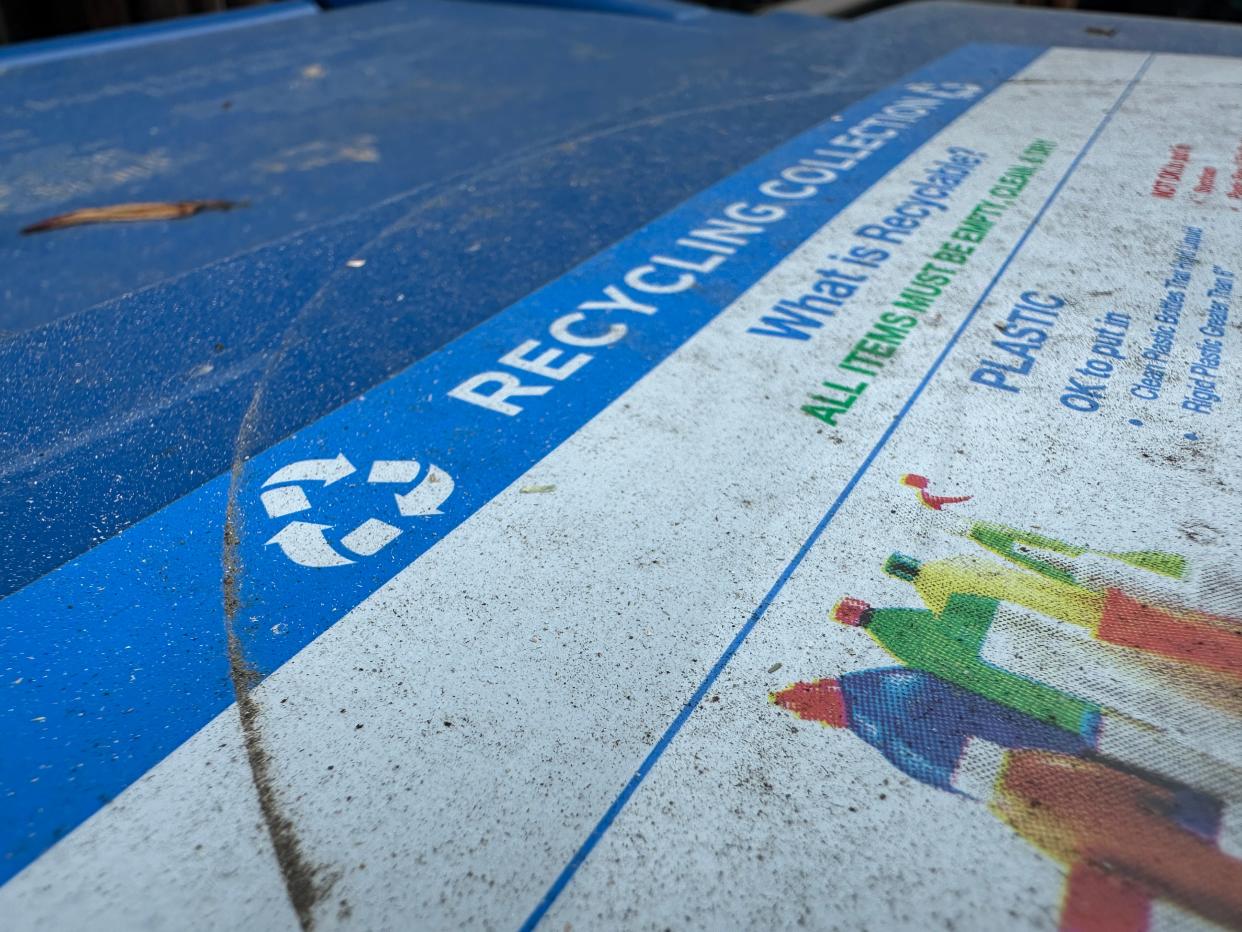Eco-tip: Misperception of the three arrows

Last week, I had the honor of making a lunchtime presentation to the lovely ladies of the Somis Thursday Club. I asked them, “How do you know whether something is recyclable?”
The first response was, “Three arrows in a triangle! …Right?”
For more than 100 years, their social club and service club has benefitted the community, and these women are serious about civic engagement, so they deserved a straight answer. The truth is complicated. But, as I told them, the answer is about to become simpler.
Although California passed Senate Bill 343 in 2021, which restricted use of the “chasing arrows” symbol to only truly recyclable items, the California Department of Resources Recycling and Recovery, or CalRecycle, has been working since then to turn the legislation into regulations. By next month, CalRecycle, with the help of a contractor, Cascadia Recycling, will complete two key steps to making determinations about what it means for an item to be considered “recyclable.”
First, a statewide study of recycling practices, including garbage sorting in many locations, will be completed. Second, CalRecycle will start requiring reports from waste sorting and recycling centers, clarifying what these centers currently accept and excluding items discarded as “contaminants” after collection.
By 2025, after receiving public input at a series of meetings, CalRecycle will issue rules backing an initial standard. “Recyclable” will mean “collected for recycling by local programs that serve at least 60% of California’s population” and “sorted for recycling at processing facilities that serve at least 60% of California’s local recycling programs,” according to Lance Klug, media and outreach supervisor for CalRecycle.
At the Somis Thursday Club, I showed the members examples of confusing green labeling. Printed on the back of a paper plate coated in plastic, in big green letters, were the words, “Recyclable and Compostable,” with an asterisk. The asterisk was crucial. In smaller writing, below the green claim, was the relevant clarification: “Where facilities exist.”
To be clear, if facilities for recycling or composting plastic-coated plates exist, they are rare and certainly not in this region.
When the new regulations take effect, manufacturers will not be able to get around prohibitions through use of tricky wording. The legislation covers not just the chasing arrows symbol, but also “other indicators of recyclability.”
Plastics may be the most frequently unrecyclable item labeled with a recycling symbol, most likely because previous legislation required plastics to be labeled with a resin code.
In 1988, California adopted into statute a labeling system developed by the Society for the Plastics Industry, a plastics trade group. Advocates for labeling say the labels facilitate separation of plastics by resin type, making recycling more viable. Critics claim the label confers a false “green halo,” implying the plastics are recyclable. The solution will likely be a number in a triangle, without the arrows.
For now, local companies collecting curbside recyclables tell residents to place plastics labeled with numbers 1 through 7 in carts, excluding film and foam. Although only No. 1 and 2 bottles have had strong markets since China began excluding some types of American recycling exports in 2018, No. 5 containers of all types are also increasingly worth sorting out, and Athens Services does so at a sorting center in Sun Valley. Gold Coast Recycling in Ventura has long sorted out various grades of mixed rigid plastics for baling and recycling.
Even after SB 343 takes effect, continued curbside recycling collection of all resin types is likely to continue, providing opportunities for new recycling-based manufacturing businesses to develop.
However, a clearer message about true recyclability, and removal of the “green halo” conferred by the recycling symbol, may communicate a more significant message. Waste reduction is even more important than recycling. Consumers may feel unjustifiably sanguine about single-use packaging when they can say, “At least it’s recycled.” Removing that excuse, when justified, could affect consumer choices.
David Goldstein, an environmental resource analyst with the Ventura County Public Works Agency, can be reached at 805-658-4312 or david.goldstein@ventura.org.
This article originally appeared on Ventura County Star: Eco-tip: Misperception of the three arrows

